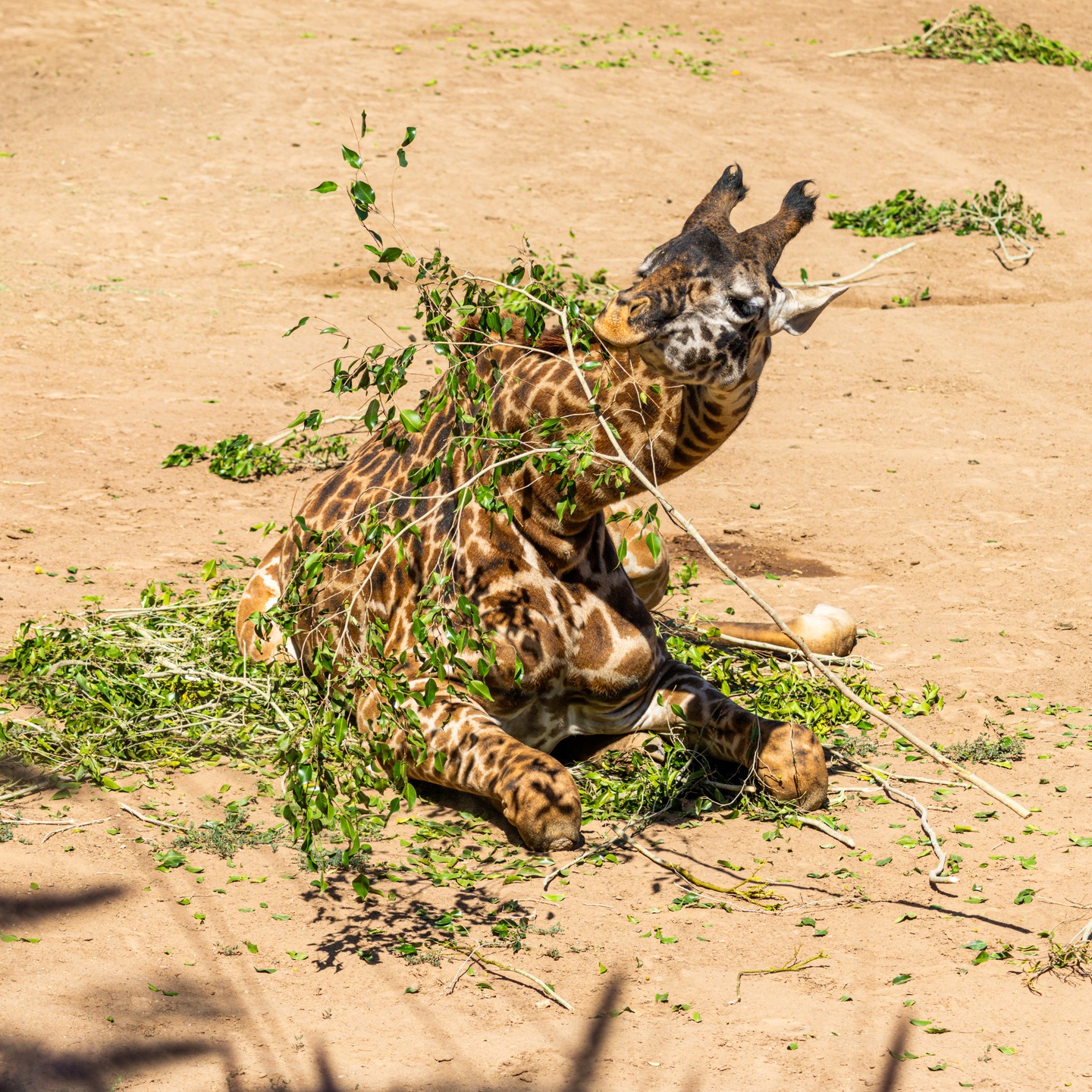- The unique behavior and ecology of the Masai giraffe
- The importance of zoo environments for animal welfare
- Raymie the giraffe’s specific case and its implications for health and enrichment
- Conservation efforts and their impact on giraffe populations
- Understanding giraffes’ dietary needs and habits
The Masai giraffe, a subspecies of the giraffe native to East Africa, presents a fascinating study in both its natural habitat and in captivity. These towering creatures, characterized by their irregular, star-shaped spots and towering height, are more than just emblematic animals in the savannah. Their biology, behavior, and conservation status command attention and care, underscoring the significance of research and management efforts.
Ecology and Behavior of the Masai Giraffe
Masai giraffes, scientific name Giraffa camelopardalis tippelskirchi, are the tallest land animals, reaching heights up to 18 feet. Their height allows them to access food sources unreachable to other herbivores, predominantly feeding on acacia trees. This feeding strategy is a prime example of niche differentiation in their ecosystems. By browsing at heights that other grazers cannot, giraffes contribute significantly to the landscape, maintaining tree diversity and supporting ecological balance.
Giraffes have a four-chambered stomach similar to cattle, making them ruminants. This adaptation allows them to efficiently break down highly fibrous plant material to extract vital nutrients. Their large size means they require considerable daily intake—up to 75 pounds of foliage. Understanding these dietary needs is critical in both zoo settings and conservation efforts to support healthy, thriving populations.
Socially, giraffes are known to form loose herds, often with shifting memberships. They exhibit behaviors such as necking, a form of combat between males to establish dominance. However, they also engage in mutual grooming and other affiliative behaviors, which play crucial roles in their complex social structures.
The Role of Zoo Environments in Animal Welfare
Zoo environments offer more than a chance for the public to witness these remarkable creatures. They provide essential opportunities for research, conservation, and education. For animals like Raymie, a Masai giraffe residing in a zoo, these institutions can offer a safe haven that ensures their health and well-being. Within zoos, giraffes receive not only basic care but also environmental enrichment to stimulate their minds and bodies.
Enrichment might include providing a variety of browse, allowing foraging as they would naturally. Physical structures that mimic the savannah foliage help giraffes exercise and engage in behaviors seen in the wild. These measures maintain physical health and encourage natural behaviors, contributing to psychological well-being.
Raymie’s experience, described as ‘bathing in green,’ underscores an important aspect of animal management: ensuring a diverse and stimulating habitat. Lying in a bed of leafy greens, Raymie mirrors a natural behavior, choosing to recline when secure in his surroundings—a testament to the welfare efforts in place.
Conservation Efforts and Impact on Giraffes
In recent years, giraffe populations have experienced concerning declines, primarily due to habitat loss, poaching, and ecological changes. Conservation initiatives have increased, aiming to protect these animals from further depletion. Organizations focus on habitat preservation, anti-poaching measures, and public awareness campaigns, striving to reverse these trends.
Captive breeding programs are also instrumental in these endeavors. Zoos play a pivotal role by participating in such programs, contributing genetically diverse individuals that could bolster wild populations if reintroduction becomes feasible. These programs are carefully managed to maintain genetic health and stability, critical for the resilience of future giraffe populations.
Understanding Giraffes’ Dietary Needs and Habits
The dietary habits of giraffes like Raymie are specifically designed to meet their nutritional needs. This includes providing fresh foliage that resembles their natural diet as closely as possible. The acacia’s thorns don’t deter giraffes, as their thick, prehensile tongues and long eyelashes help navigate these defenses, showcasing a fascinating evolutionary adaptation.
The detailed understanding of their diet extends to knowing their preferences and feeding behaviors, which guides zoo dietary plans. Careful management ensures that giraffes receive balanced nutrition, supporting their growth and health. This detailed knowledge aids in creating enriching environments that replicate natural feeding strategies, fostering well-being.
The case of Raymie, the giraffe bathing in green, is more than a viral sensation; it highlights significant aspects of animal management, welfare, and conservation. By providing enriching and appropriate environments, zoos help safeguard a future where giraffes, such as the majestic Masai, continue to inspire and educate. Through ongoing research and conservation efforts, the goal remains to ensure these towering giants thrive for generations to come.
*****
Source Description
BREAKING: HAPPY GIRAFFE BATHES IN GREEN! 🗞️‼️🦒
While Masai giraffe are known to rest and even sleep while standing up, they may also lie down to take a load off when comfortable with their surroundings.
Alt-text: Raymie the Masai giraffe lies in a bed of leafy greens, which cushion him as he lies down and fills his stomach as he gnaws on a branch.


